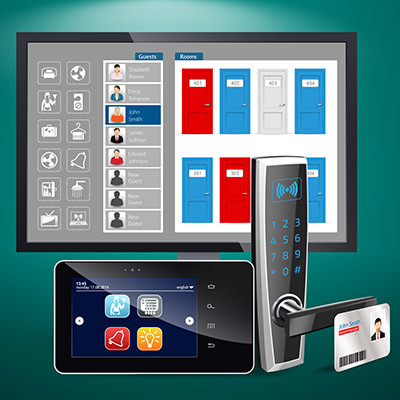SouthBridge Consulting Blog
Small businesses have a lot to worry about in terms of technology, but one of the things that often gets overlooked is network security. Some small businesses feel that they are too small to be considered a viable target for hackers, but they are wrong; all businesses have data valuable for hackers in some form.
We talk a lot about different types of technology, securing your technology and your accounts, and a lot of other technology-related issues on this blog, but because of the generalities of whatever technology (or strategy) we’ve chosen to write about that day, we never confront the thing that is most important to a business: How does any technology fit into what we do here? What value do we get from any type of technology? Today, we thought we’d talk a little bit about what you need to do to find the right technology for your business and how to come up with those decisions.
Do your employees have a hard time with the technology that you’ve provided them? Are your digitization efforts lagging behind? Are the systems your business is using coming up on their end of support date? Old technology can cause major problems for a business. In this week’s blog, we go through some of the signs that you may need to upgrade your business’ technology.
The Internet of Things, or IoT, has grown to over 14 billion connected devices as of this year, and this number is expected to exceed 20 billion devices by the end of 2026. With such a shocking number of devices, you might wonder what types of devices are out there and what they mean for your business. Let’s look at the IoT and what you need to know to keep it at the top of your mind this upcoming year.
For a business, technology solves a lot of problems. Covering operational pain points is what it does best, after all. Unfortunately, they come with their own pain points that have to be dealt with. In today’s blog, we’ll give you a list of common technology pain points a small business can have and how managed IT services go above and beyond to mitigate those problems.
When it comes to your technology infrastructure, it’s natural that some of your solutions will be more used than others, but do you know where you are wasting money and resources? Today’s blog article is all about the digital employee experience, or DEX, and how you can use it to better your business’ relationship with its technology solutions.
What does your IT budget look like for the remainder of this year? According to Gartner, your IT costs might be increasing. So, we ask you this: are you being intentional with your IT spending, and are you spending your business’ hard-earned revenue on technology which advances your organization’s ability to succeed? Let’s take a look at Gartner’s study to see what we can learn from patterns in IT expenses.
With Amazon’s annual Prime Day having come and gone, we can’t help but wonder how many of you bought consumer electronics while they were on sale through the web retailer. If you did, that’s amazing, and we’re glad you got what you’re looking for. However, we do want to strongly urge you to consider disposing of your old electronics in an environmentally conscious way.
Innovation is something that you want the people working with your technology to have a highly-developed sense of. Creativity isn’t often associated with business IT, but it is something that should be considered a true benefit if it can be brought into your operations.
Let’s explore exactly why creativity is an asset (even with your in-house IT team) and how you can nurture it in your employees.
We’re always talking about boosting productivity and the role your technology has in that quest. What we don’t always talk about is how boosting innovation can help free up your employees to produce better results. It’s the same technology, and it can have multiple benefits. In this week’s blog, we’ll discuss how focusing on how these two thoughts can be one and the same.
We always hear about how innovation drives business. This has been typically true for the whole of human existence. As businesses have tried to stay profitable among the problems they’ve faced throughout the COVID-19 pandemic, we are beginning to see a troubling trend where new products are released with a laundry list of new features, but aren’t really enhancing the customer experience. Today, we look at how businesses have enhanced their marketing efforts to make products that don’t provide the types of innovations that are useful to customers.
A good business owner envisions the future and what it could bring about. You may have already devoted a considerable amount of time to the good things that could happen, but how often do you picture the bad? If you don’t imagine the worst-case scenario, you could be putting your business’ life on the line. Are you prepared to deal with a data loss incident?
How often do you find yourself stressing out about who has access to which data or internal resources on your company network? What about who has access to open the front door of your office or who has access to important physical resources within your building? Ensuring the security of your business’ assets is critical, and access control tools can help your company ensure that only authorized individuals have access to specific parts of your organization’s infrastructure, be it physical or digital.
How often over the past year or two have you gone to replace a device on your infrastructure, only to find that the price has increased or the device simply isn’t available? This is an issue with the current hardware shortage, particularly for business electronics. Since businesses depend on technology, it becomes critical that you understand how this shortage impacts your day-to-day operations.
Cloud computing is being used by nearly everyone nowadays, and most of the time it presents a lot of value that can’t be found with purchasing, managing, and maintaining an in-house computing infrastructure. As an organization begins moving more and more of their computing to the cloud, there is a situation that arises that industry professionals call “cloud sprawl”.
In popular science fiction, the portrayal of an artificial intelligence is that of an entity completely compelled by pure logic, objective fact being the only thing that factors into its considerations. The same can not be said of the artificially intelligent tools currently in use in the real world. Much like their flawed creators, many of today’s AI systems have presented some considerable biases in their operations. Let’s discuss this issue, and how it can be resolved.
Technology is one element that many small businesses struggle with, but it turns out that a lot of the same advice that you might get for regular life lessons can also apply to IT! Let’s take a closer look at how we might apply some of these lessons and why it just makes good sense to keep these tips close at hand.
You might be familiar with the concept of hosting a service or application in-house on your own server units, and if you are, you know all about the struggles that come along with doing so. But what if we told you that you can get the same benefits of hosting your own applications and IT systems without the need for any of the bulky equipment taking up space in your office? Yes, that’s right—you too can host your business applications, even if you do not have the space to do so, and it’s all thanks to the cloud.




















